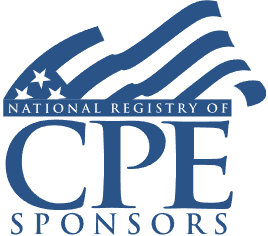Medicaid Asset Protection Trusts: Technical Overview and Tax Considerations
State Specific Eligibility, Transferring Assets, Basis Step-Up at Death

Course Details
- smart_display Format
On-Demand
- signal_cellular_alt Difficulty Level
Intermediate
- work Practice Area
Tax Preparer
- event Date
Friday, April 25, 2025
- schedule Time
1:00 p.m. ET./10:00 a.m. PT
- timer Program Length
110 minutes
-
BARBRI is a NASBA CPE sponsor and this 110-minute webinar is accredited for 2.0 CPE credits.
-
BARBRI is an IRS-approved continuing education provider offering certified courses for Enrolled Agents (EA) and Tax Return Preparers (RTRP).
This webinar will explain the tax treatment of Medicaid Asset Protection Trusts (MAPTs) and how they are used to protect taxpayers' wealth. Our panel of trust and estate specialists will review common state guidelines for Medicaid eligibility, discuss the grantor trust reporting and taxation rules, and offer suggestions to meet the state-specific asset and income thresholds.
Faculty

Mr. Menninger focuses his practice on estate planning, including asset protection, working with farmers and small business owners, planning for special needs, and planning for same-sex couples. He also has an extensive background in estate, trust, and guardianship litigation. Mr. Menninger is committed to offering clients both legal knowledge and compassion in planning for their families and future. He understands that individuals and families face important decisions when considering everything they have accumulated through the years and everyone they love. His practice approach is to work closely with his clients to allay fears and accomplish goals with personal support and the clear information needed to properly plan. Licensed in Ohio, Indiana, and Kentucky, He is able to serve clients in the Southwest Ohio region and beyond. He has been named a Rising Star by Ohio's Super Lawyers.

Mr. Hamilton is an Attorney at Hamilton Trust, Estate & Elder Law. He is licensed to practice in both state and federal courts throughout Georgia.

Mr. Weyers is a graduate of Okemos High School, Spring Arbor University, and Western Michigan Thomas M. Cooley Law School and has lived and worked in Mid-Michigan since 1973. After a 20-year career as Michigan-licensed life and health insurance agent working in the employee benefits industry wherein Mr. Weyers served in several capacities including Chief Executive Officer, at WEYCO INC. His practice areas include wills, trusts, probate, and long-term care, and special needs planning.
Description
Long-term care costs continue to increase dramatically. Taxpayers want to plan to cover these substantial costs without consuming income streams and assets they have worked lifelong to acquire. A MAPT can provide relief for eligible individuals. States have varying income and asset thresholds that individuals must fall below to qualify for Medicaid coverage. In New York, for example, applicants must have less than $31,175 in assets, while the Georgia and Colorado threshold is only $2,000. To complicate matters, Medicaid has a five-year lookback period for asset transfers.
Although MAPTs are irrevocable trusts, specific powers listed in IRC Sections 671-679 can be included in the MAPT so that the trust is taxed as a grantor trust. The grantor could be given a reversionary interest or have the power to substitute assets, for example. Since the highest tax bracket, 37 percent, begins at $15,751 for taxable income of a trust but starts at $626,351 for individuals (2025), being taxed as a grantor can be critical. Trust and estate advisers need to grasp the tax treatment of MAPTs to properly advise clients and report the income from these beneficial trusts.
Listen as our panel of elder law experts discusses how taxpayers can utilize MAPTs to minimize taxes and preserve clients' assets.
Outline
- Medicaid Asset Protection Trusts: introduction
- Irrevocable trusts
- Grantor trust taxation
- Selecting a trustee
- Transferring assets to a MAPT
- Lookback rules
- Potential tax consequences
- State-specific asset and income limits
- Planning for income and asset limitations
- Gift taxes
- Qualifying for basis step-up
- Examples
Benefits
The panel will review these and other critical issues:
- Grantor trust reporting requirements
- State-specific income and asset eligibility requirements
- The look-back period for asset transfers
- Planning alternatives to qualify for Medicaid long-term care benefits
NASBA Details
Learning Objectives
After completing this course, you will be able to:
- Identify Medicaid eligibility requirements in specific states
- Determine reporting requirements for MAPTs
- Decide how the look-back rules impact asset transfers
- Ascertain whether MAPT assets qualify for a basis step-up
- Field of Study: Taxes
- Level of Knowledge: Intermediate
- Advance Preparation: None
- Teaching Method: Seminar/Lecture
- Delivery Method: Group-Internet (via computer)
- Attendance Monitoring Method: Attendance is monitored electronically via a participant's PIN and through a series of attendance verification prompts displayed throughout the program
- Prerequisite: Three years+ business or public firm experience preparing complex tax forms and schedules, supervising other preparers or accountants. Specific knowledge and understanding of estate, gift and trust taxation including various trusts types, the unified credit, and portability.

Strafford Publications, Inc. is registered with the National Association of State Boards of Accountancy (NASBA) as a sponsor of continuing professional education on the National Registry of CPE Sponsors. State boards of Accountancy have final authority on the acceptance of individual courses for CPE Credits. Complaints regarding registered sponsons may be submitted to NASBA through its website: www.nasbaregistry.org.

Strafford is an IRS-approved continuing education provider offering certified courses for Enrolled Agents (EA) and Tax Return Preparers (RTRP).
Related Courses

Medicaid Asset Protection Trusts: Technical Overview and Tax Considerations
Available On-Demand

Family Partnerships: Navigating the Discounting Rules for Family-Controlled Entities
Thursday, March 6, 2025
1:00 p.m. ET./10:00 a.m. PT

Form 1041 Schedule D: Reporting Capital Gains for Trusts and Estates
Available On-Demand
Recommended Resources
How CPE Can Bridge the Gap Between What You Know and What You Need to Know
- Career Advancement